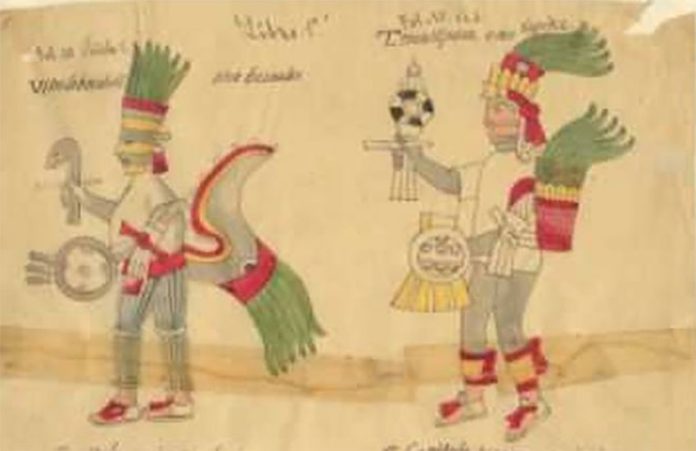The Getty Research Institute (GRI) will give a public lecture on August 13 to tell the story of the Conquest from the perspective of the Mexica people, also known as the Aztecs. It coincides with the 500th anniversary of the fall of the pre-hispanic city of Tenochtitlán, the forbear to Mexico City, which marked the collapse of the Aztec Empire.
A reading in English, Spanish and Náhuatl of Book 12 of the Florentine Codex will connect attendees with eyewitness accounts by indigenous survivors of the Conquest.
The Florentine Codex is a work compiled by Spanish Franciscan friar Bernardino de Sahagún in the 16th century, in collaboration with indigenous Mexicas. Its text was written in both Spanish and Náhuatl and consists of 2,400 pages and 2,000 illustrations drawn by indigenous artists, organized into 12 books documenting the culture, religious beliefs, society, economics, and natural history of the Mexica people.
The version of historical events presented in the codex contrasts markedly with the accounts of conqueror Hernán Cortés and subsequent Spanish versions. For example, a famous defeat for the Spanish, which is commonly known as the “Night of the Sorrows,” is celebrated as a Mexica military triumph in the codex.
The event will run from 9:00 a.m. to 5:00 p.m. with opportunity for active audience participation. The daylong reading will close with a musical performance and poetry readings.
This event will be co-presented by GRI, the Los Angeles County Museum of Art (LACMA), and the National Library of Anthropology and History. It is part of the GRI’s Florentine Codex Initiative and LACMA’s exhibition Mixpantli: Space, Time, and the Indigenous Origins of Mexico which will open on December 12.
Members of the public can register here to attend the event online.
Mexico News Daily
